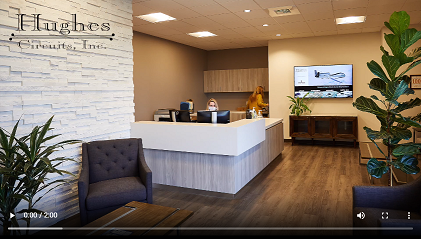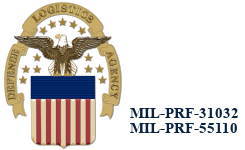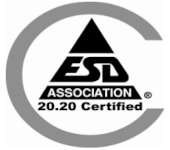Arlon Materials
Click on a part number for more detailed information
| Product | Compositon | Dk | Df | Thermal Coefficient of Er ppm/°C | Specific Gravity (unitless) or Density (g/cm3) | NASA Outgassing - Total Mass Loss (%) | NASA Outgassing - Collected Volatile (%) |
|---|---|---|---|---|---|---|---|
| DiClad 522 | Woven Fiberglass reinforced PTFE | 2.40-2.60 | 0.0018 | -153 | 2.31 | 0.02 | 0.00 |
| DiClad 527 | Woven Fiberglass reinforced PTFE | 2.40-2.60 | 0.0018 | -153 | 2.31 | 0.02 | 0.00 |
| DiClad 870 | Woven Fiberglass reinforced PTFE | 2.33 | 0.0013 | -161 | 2.26 | 0.02 | 0.00 |
| DiClad 880 | Woven Fiberglass reinforced PTFE | 2,17, 2.20 | 0.0009 | -160 | 2.23 | 0.01 | 0.01 |
| CuClad 250GT | Cross Piled Woven Fiberglass reinforced PTFE | 2.50 | 0.0018 | -170 | 2.31 | 0.01 | 0.00 |
| CuClad 250GX | Cross Piled Woven Fiberglass reinforced PTFE | 2.40-2.60 | 0.0022 | -170 | 2.31 | 0.01 | 0.00 |
| CuClad 233LX | Cross Piled Woven Fiberglass reinforced PTFE | 2.33 | 0.0013 | -171 | 2.26 | 0.01 | 0.01 |
| CuClad 217LX | Cross Piled Woven Fiberglass reinforced PTFE | 2.17, 2.20 | 0.0009 | -151 | 2.23 | 0.01 | 0.01 |
| IsoClad 933 | Non-Woven Fiberglass reinforced PTFE | 2.33 | 0.0016 | -132 | 2.27 | 0.03 | 0.00 |
| IsoClad 917 | Non-Woven Fiberglass reinforced PTFE | 2.17 | 0.0013 | -157 | 2.23 | 0.02 | 0.00 |
| CLTE-XT | Glass, PTFE and Mirco-Dispersed Ceramic | 2.94 | 0.0012 | -9 | 2.02 | 0.02 | 0.00 |
| CLTE-AT | Glass, PTFE and Mirco-Dispersed Ceramic | 3.00 | 0.0013 | -10 | 2.06 | 0.02 | 0.00 |
| CLTE | Glass, PTFE and Mirco-Dispersed Ceramic | 2.98 | 0.0025 | -9 | 2.38 | 0.02 | 0.00 |
| AD255A | Glass, PTFE and Mirco-Dispersed Ceramic | 2.55 | 0.0015 | -138 | 2.30 | NT | NT |
| AD260A | Glass, PTFE and Mirco-Dispersed Ceramic | 2.60 | 0.0017 | -80 | 2.30 | NT | NT |
| AD300A | Glass, PTFE and Mirco-Dispersed Ceramic | 3.00 | 0.0020 | -110 | 2.10 | NT | NT |
| AD320A | Glass, PTFE and Mirco-Dispersed Ceramic | 3.20 | 0.0032 | -125 | 2.09 | NT | NT |
| Part Number | Moisture Absorption % | K W/m/K | CTE * ppm/°C X | CTE * ppm/°C Y | CTE * ppm/°C Z | Peel Strength lbs/in 1 oz Cu |
|---|---|---|---|---|---|---|
| DiClad 522 | 0.03 | 0.254 | 14 | 21 | 173 | 14 |
| DiClad 527 | 0.03 | 0.254 | 14 | 21 | 173 | 14 |
| DiClad 870 | 0.02 | 0.257 | 17 | 29 | 217 | 14 |
| DiClad 880 | 0.02 | 0.261 | 25 | 34 | 252 | 14 |
| CuClad 250GT | 0.03 | 0.254 | 18 | 19 | 177 | 14 |
| CuClad 250GX | 0.03 | 0.254 | 18 | 19 | 177 | 14 |
| CuClad 233LX | 0.02 | 0.258 | 23 | 24 | 194 | 14 |
| CuClad 217LX | 0.02 | 0.261 | 29 | 28 | 246 | 14 |
| IsoClad 933 | 0.05 | 0.263 | 31 | 35 | 203 | 10 |
| IsoClad 917 | 0.04 | 0.263 | 46 | 47 | 236 | 10 |
| CLTE-XT | 0.02 | 0.56 | 8 | 8 | 20 | 7.2 |
| CLTE-AT | 0.03 | 0.64 | 8 | 8 | 20 | 6.5 |
| CLTE | 0.04 | 0.50 | 10 | 12 | 34 | 7 |
| AD255A | 0.04 | 0.30 | 16 | 16 | 80 | 12 |
| AD260A | 0.04 | 0.32 | 16 | 16 | 80 | 17 |
| AD300A | 0.02 | 0.49 | 12 | 12 | 125 | 13 |
| AD320A | 0.02 | 0.45 | 14 | 14 | 128 | 14 |
DiClad Laminates by Arlon
DiClad laminates are woven fiberglass/PTFE composite materials for use as printed circuit board substrates. Using precise control of the fiberglass/PTFE ratio, DiClad laminates offer a range of choices from the lowest dielectric constant and dissipation factor to a more highly reinforced laminate with better dimensional stability.
The woven fiberglass reinforcement in DiClad products provides greater dimensional stability than nonwoven fiberglass reinforced PTFE based laminates of similar dielectric constants. The consistency and control of the PTFE coated fiberglass cloth allows Arlon to offer a greater variety of dielectric constants and produces a laminate with better dielectric constant uniformity than comparable non-woven fiberglass reinforced laminates. The coated fiberglass plies in DiClad materials are aligned in the same direction. Cross-plied versions of many of these materials are available as Arlon CuClad materials.
DiClad laminates are frequently used in filter, coupler and low noise amplifier applications, where dielectric constant uniformity is critical. They are also used in power dividers and combiners, where low loss is important.
DiClad 522 and DiClad 527 (Er=2.40−2.65) use a higher fiberglass/PTFE ratio to provide mechanical properties approaching conventional substrates. Other advantages include better dimensional stability and lower thermal expansion in all directions. The electrical properties of DiClad 522 and 527 are tested at 1 MHz and 10 GHz, respectively.
Features of DiClad
- Extremely Low Loss Tangent
- Excellent Dimensional Stability
- Product Performance Uniformity
Benefits of DiClad
- Electrical Properties are Highly Uniform Across Frequency
- Consistent Mechanical Performance
- Excellent Chemical Resistance
Typical Applications of DiClad
- Military Radar Feed Networks
- Commercial Phased Array Networks
- Low Loss Base Station Antennas
- Missile Guidance Systems
- Digital Radio Antennas
- Filters, Couplers, LNAs
Links for DiClad
CuClad Laminates by Arlon
CuClad® laminates are woven fiberglass/PTFE composite materials for use as printed circuit board substrates. Using precision control of the fiberglass/PTFE ratio, CuClad laminates offer a range of choices from the lowest dielectric constant and loss tangent to a more highly reinforced laminate with better dimensional stability.
The woven fiberglass reinforcement in CuClad products provides greater dimensional stability than non-woven fiberglass reinforced PTFE based laminates of similar dielectric constants. The consistency and control of the PTFE coated fiberglass cloth allows Arlon to offer a greater variety of dielectric constants and produces a laminate with better dielectric constant uniformity than comparable non-woven fiberglass reinforced laminates. These properties make CuClad an attractive choice for filters, couplers and low noise amplifiers.
CuClad laminates are crossplied (alternating layers of coated fiberglass plies are oriented 90' to each other). This provides true electrical and mechanical isotropy in the XY plane, a feature unique to CuClad. No other woven or nonwoven fiberglass reinforced PTFE based laminates make this claim. Designers have found this degree of isotropy critical in some phased array antenna applications.
CuClad 217 (Er=2.17, 2.20) uses a low fiberglass/PTFE ratio to provide the lowest dielectric constant and dissipation factor available in fiberglass reinforced PTFE based laminates. Together, these properties offer faster signal propagation and higher signal/noise ratios.
CuClad 233 (Er=2.33) uses a medium fiberglass/PTFE ratio to balance lower dielectric constant and improved dissipation factor without sacrificing mechanical properties.
CuClad 250 (Er=2.40–2.60) uses a higher fiberglass/PTFE ratio to provide mechanical properties approaching those of conventional substrates. Better dimensional stability and lower thermal expansion in all directions are other significant benefits. The electrical properties of CuClad 250GT and CuClad 250GX are tested at 1 MHz and 10 GHz respectively. For critical performance applications, CuClad products may be specified with an “LX” testing grade; this designates that each sheet will be tested individually, and a test report will be issued with the order.
Features of CuClad
- Cross Piled Woven Fiberglass, alternating piles are oriented 90° to each other
- High PTFE to Glass Ratio
- Better dielectric constant uniformity than comparable non-woven fiberglass reinforced laminates
Benefits of CuClad
- Electrical and Mechanical Isotropy in the X-Y Plane
- Extremely Low Loss
- Well Suited for Er Sensitive Circuits
Typical Applications of CuClad
- Military Electronics (Radars, ECM, ESM)
- Microwave Components (LNAs, filters, couplers, etc)
Links for CuClad
IsoClad Laminates by Arlon
IsoClad laminates are nonwoven fiberglass/PTFE composites for use as printed circuit board substrates. The nonwoven reinforcement allows these laminates to be used more easily in applications where the final circuit will be bent to shape. Conformal or “wrap-around” antennas are a good example.
IsoClad products use longer random fibers and a proprietary process to provide greater dimensional stability and better dielectric constant uniformity than competitive nonwoven fiberglass/PTFE laminates of similar dielectric constants.
IsoClad 917 (Er=2.17, 2.20) uses a low ratio of fiberglass/PTFE to achieve the lowest dielectric constant and dissipation factor available in a combination of PTFE and fiberglass.
IsoClad 933 (Er=2.33) uses a higher fiberglass/PTFE ratio for a more highly reinforced combination that offers better dimensional stability and increased mechanical strength.
Features of IsoClad
- Nonwoven Fiberglass Reinforcement
- Low Dielectric Constant
- Extremely Low Loss
Benefits of IsoClad
- Less Rigid than Woven Fiberglass
- Highly isotropic in X, Y and Z Directions
Typical Applications of IsoClad
- Conformal Antennas
- Stripline and Microstrip Circuits
- Missile Guidance Systems
- Radar and Electronic Warfare Systems
Links for IsoClad
CLTE from Arlon
CLTE is a ceramic powder-filled and woven micro fiberglass reinforced PTFE composite engineered to produce a stable, low water absorption laminate with a nominal Dielectric Constant of 2.98.
Arlon’s proprietary formulation for CLTE materials creates a reduced Z-direction thermal expansion (nearer to the expansion rate for copper metal), improving plated through hole reliability. It is stable during subsequent thermal cycling in process, assembly and use.
The formulation was chosen to minimize the change in εr caused by the 19°C second-order phase transition in the molecular structure. This temperature stable εr simplifies circuit design and optimizes circuit performance in applications such as phased array antennas.
CLTE also provides higher thermal conductivity that increases the rate of heat dissipation and thus permits use of higher power in an otherwise equivalent design.
CLTE retains the low loss tangent associated with PTFE. While once required only for microwave frequencies, low loss is also of great value in reducing cross talk in high-speed digital applications and minimizes the power of consumption of a circuit design.
Features of CLTE
- Ceramic/PTFE Composite
- Low Water Absorption
- High Thermal Conductivity
- Low Loss
- Tight Dk and Thickness Tolerance
Benefits of CLTE
- Thermally Stable DK and Df
- Dimensional Stability
Typical Applications for CTLE
- Radar Manifolds
- Phased Array Antennas
- Microwave Feed Networks
- Phase Sensitive Electronic Structures
- PAs, LNAs, LNBs
- Satellite & Space Electronics
Links for CTLE
Arlon's Data Sheet for CTLE
Arlon's Data Sheet for CTLE-XT
Arlon's Data Sheet for CTLE-AT








